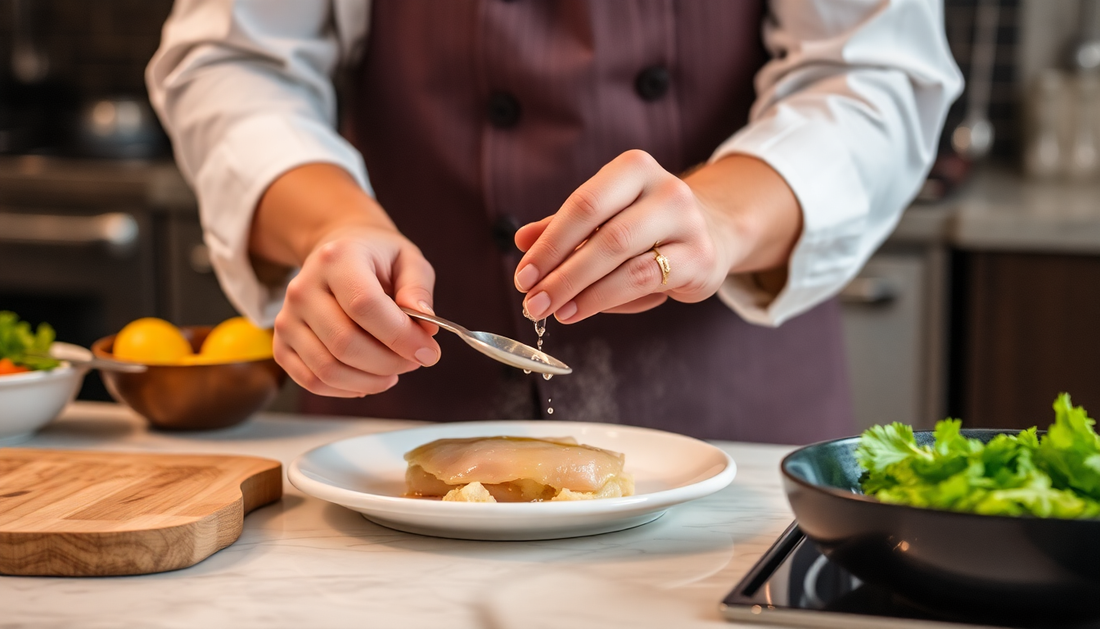
Why Sous-vide Chicken Breast is a Killer
Why Sous-vide Chicken Breast is a Killer
Cooking chicken can be an art, and different methods have distinct impacts on flavor and nutrition. In recent years, sous-vide cooking has risen in popularity, often making waves due to its unique approach to food preparation. Choosing the right method can enhance not just taste but also the nutritional profile of your meal. Let’s explore the various cooking techniques for chicken, with a special focus on the benefits of sous-vide.
Overview of Chicken Cooking Methods
When it comes to cooking chicken, many methods are available. Traditional chicken cooking methods like grilling, baking, frying, and poaching have their own advantages and drawbacks.
Traditional Chicken Cooking Methods
Grilling gives chicken a smoky flavor and appealing grill marks, but it can easily lead to dryness if overcooked. Baking is simple, yet it can take time and may not always yield juicy results. Frying, while deliciously crispy, adds unwanted fats, leading many to think twice about this method. Lastly, poaching allows for a moist, tender chicken but may lack flavor without proper seasoning.
Sous-vide Cooking Explained
Sous-vide literally means 'under vacuum' in French. This method involves sealing food in a bag and cooking it slowly in a water bath at a precise temperature. This controlled environment ensures that chicken is cooked evenly, resulting in a tender and flavorful dish.
Comparison of Chicken Cooking Methods
Understanding how different cooking techniques affect chicken can help you choose the best method to enhance your meal.
Cooking Techniques and Their Impact on Flavor
Each cooking method brings out unique flavors in chicken. Grilling imparts a charred essence, while baking offers a homey, roasted taste. Frying adds a decadent richness, but often at the cost of health. Sous-vide, however, shines by maintaining the delicate natural flavors of chicken without heavy fats or spices, allowing for an authentic taste experience.
Chicken Texture Comparison
When considering chicken texture comparison, sous-vide stands out. Traditional methods may lead to overcooking or uneven cooking, causing dryness. In contrast, sous-vide chicken remains moist and tender, as the cooking temperature is precisely controlled. You get a melt-in-your-mouth experience that’s hard to match with other methods.
Sous-vide Cooking Benefits
Sous-vide cooking isn’t just about flavor; it offers various benefits that enhance your chicken dish.
Preserving Nutritional Value
One of the primary sous-vide cooking benefits is its ability to retain nutrients. Cooking chicken at lower temperatures reduces nutrient loss compared to traditional methods, which often rely on higher heat. So you not only enjoy great flavor but also the nutritional value that comes with perfectly cooked chicken.
Consistent Cooking Results
In terms of consistency, sous-vide cooking excels. By cooking chicken for a longer time at a stable temperature, you achieve perfect doneness every time. Unlike frying or grilling, which can yield unpredictable results, sous-vide ensures you won’t be biting into dry or undercooked chicken.
Nutritional Comparison of Chicken Cooking Methods
Evaluating the nutritional profile of different cooking methods sheds light on the health implications of your choices.
Protein Retention in Different Methods
When we break down the protein retention, sous-vide cooking retains more protein content in chicken compared to methods like frying, where proteins can break down due to high temperatures. This means you’re getting more quality protein without the added fats from frying.
Fat Retention and Health Implications
Fat retention is another crucial factor. Frying chicken significantly increases fat content, while sous-vide cooking maintains a leaner profile. This makes sous-vide an ideal choice for those looking to cut down on unhealthy fat while still enjoying chicken's delicious taste.
Pros and Cons of Sous-vide vs. Traditional Methods
To truly appreciate sous-vide, it’s essential to consider its advantages and potential downsides.
Advantages of Sous-vide Cooking
Sous-vide cooking provides numerous benefits. It allows for busy cooks to meal prep in advance and enjoy a delicious meal without stress. The method guarantees a succulent texture and generous flavor, elevating any chicken dish.
Potential Disadvantages
However, sous-vide does have some downsides. The greatest hurdle is the initial time investment. Cooking chicken using sous-vide may take longer than traditional methods, demanding patience. Additionally, you will need special equipment like a sous-vide immersion circulator and vacuum-sealable bags.
Practical Tips for Cooking Chicken with Sous-vide
To get started with sous-vide chicken cooking, some practical tips can make all the difference.
Getting Started with Sous-vide
First, ensure you have the necessary equipment, including a sous-vide immersion circulator and vacuum bags. Make sure your circulator can maintain precise temperatures for ideal cooking.
Best Practices for Sous-vide Chicken
For best practices, cook chicken breast at around 140°F for one to four hours. This range ensures the chicken remains incredibly tender while eliminating harmful bacteria. Don’t forget to season your chicken before vacuum sealing for maximum flavor.
Conclusion
Ultimately, choosing the right cooking method can make a significant difference in your chicken dishes. The comparison of chicken cooking methods showcases how sous-vide stands out in flavor, texture, and nutrition. We encourage you to experience the difference for yourself; give sous-vide chicken breast a try and elevate your culinary game to new heights.
